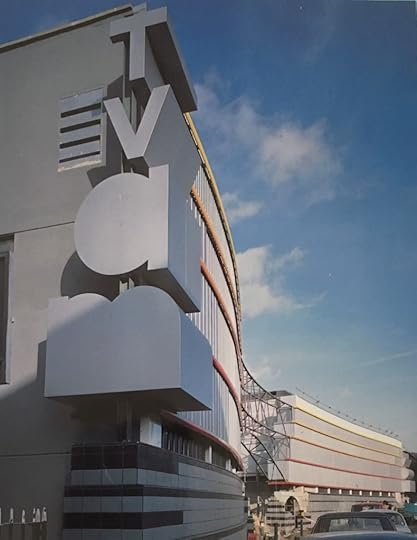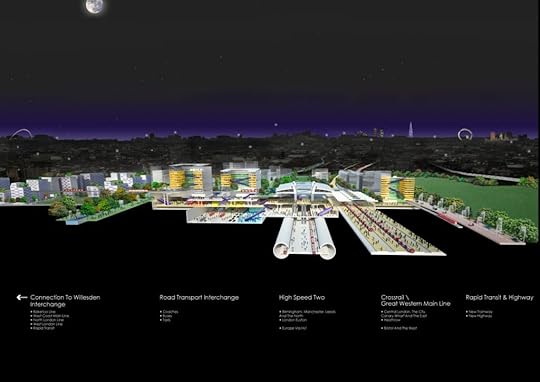112. A tribute to Terry Farrell
It was with great sadness that I learned yesterday of the passing of Sir Terry Farrell. Terry was a titan of the British architectural scene. Though he often saw himself as something of an outsider, his ability to grapple with urban problems and arrive at original – often unconventional – solutions marks a life of extraordinary contribution.
I first encountered his work when I was applying to study architecture. One university (I forget which) asked me to bring along a portfolio of sketches for the interview. Lacking one, I quickly set about compiling it, and one of the buildings I sketched was the recently completed and wonderfully exuberant TV-am headquarters in Camden. At the time, I was more drawn to high-tech architecture than to postmodernism, but Farrell’s work taught me early on that architecture could be fun—something playful and imaginative, rather than the overly serious, polarised discipline it is often made out to be. My tutors, unfortunately, were less convinced.
 The TV-am Building
The TV-am BuildingWhile many obituaries today rightly celebrate Terry’s architectural legacy, for me it was his impact as an urbanist that was most profound. Where others sought to solve urban challenges by reaching for another big architectural statement, Terry worked with the grain of places, discerning what they needed rather than imposing what ego – or even the client – might demand. He often said that “the place is the client,” an expression that perfectly captures his deep urban sensibility.
It was this sensibility that led me, in the early 2000s, to invite him to serve as a Visiting Professor at The Bartlett School of Planning when I was Head of School. He accepted and went on to deliver lectures for a decade, always encouraging students to shed their constraints and think differently about the problems we set them. In this role, he was an inspiration to many.
In his later years, Terry became a passionate advocate for urbanism and a tireless promoter of urban ideas. His earlier embrace of postmodernism, in retrospect, was the perfect training ground for this role. In London, Hong Kong, and elsewhere, he generated a stream of masterplans – sometimes implemented, often not, and frequently pro bono and speculative simply because he had something important to say. His proposals for the Marylebone/Euston Road corridor, the Thames Gateway, and London’s airports are all excellent examples.
 Terry Farrell’s plans for Old Oak Common
Terry Farrell’s plans for Old Oak CommonThere was always something fresh and original in Terry’s plans, many of which found their way into his numerous books. As an academic, books shape much of my intellectual landscape, and his works loom large in my own personal bibliography. His brilliant Shaping London came out just as I was embarking on my own project trying to understand London’s public spaces, and I remember thinking, “Damn, Terry already has all the answers.” Later, in The City as a Tangled Bank: Urban Design Versus Urban Evolution, he argued persuasively against the ‘big plan’ and in favour of incremental change – an argument that, characteristically, challenged even the premises of his own masterplanning. It showed once again his ability to think differently, and his willingness to shed even the weight of his own past ideas.
My most direct contact with him came in the wake of the 2013 Farrell Review, which he launched with lukewarm government support to help fill the leadership gap in design quality left by CABE’s demise. The report was comprehensive and wide-ranging – parts of it I agreed with, others less so. But Terry was always generous in hearing out both supporters and dissenters. From the discussions that followed, the Place Alliance initiative was born. That initiative occupied the next decade of my life, and though Terry was never directly involved, its spark came from his report.
And so, as I sit here at Charing Cross Station – one of his designs – waiting for my train, I find myself reflecting on how much I, like many others, have to thank Terry for. He was an architectural titan who refused to be pigeonholed, and whose work was all the more meaningful and impactful as a result.
Matthew Carmona
Professor of Planning & Urban Design
The Bartlett School of Planning, UCL
Matthew Carmona's Blog
- Matthew Carmona's profile
- 12 followers



